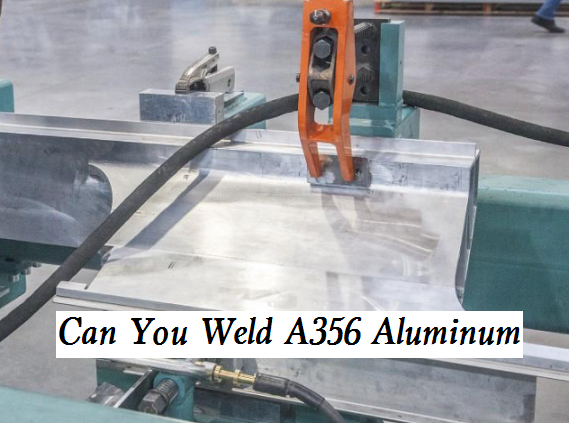A356 is a commonly used cast aluminum alloy used in die casting, can you weld A356 aluminum, and how to weld it? Here we’ll introduce some instructions about it.

Can You Weld A356 Aluminum?
Yes, A356 aluminum can be welded using various welding techniques such as Gas Tungsten Arc Welding (GTAW), Gas Metal Arc Welding (GMAW), and Friction Stir Welding (FSW). However, the welding process for A356 aluminum requires specific procedures to ensure that the weld is strong and has good mechanical properties.
It is important to note that A356 aluminum is a casting alloy that contains silicon and magnesium, which can affect its weldability. The presence of silicon can lead to porosity in the weld, while the presence of magnesium can cause cracking during the welding process. Therefore, it is essential to use proper welding techniques, filler materials, and pre-weld and post-weld treatments to mitigate these issues and produce a sound weld.
Additionally, it is recommended to consult with a qualified welding professional or refer to the welding guidelines provided by the aluminum manufacturer to ensure that the welding process for A356 aluminum is carried out correctly.
How to Weld A356 Aluminum?
Welding A356 aluminum requires specific procedures to ensure that the weld is strong and has good mechanical properties. Here are some general steps to follow when welding A356 aluminum:
1) Prepare the surfaces: Before welding, it is essential to clean the surfaces to be welded thoroughly. This can be done by using a wire brush, sandpaper, or a solvent. Any oil, grease, or other contaminants should be removed to prevent porosity in the weld.
2) Choose the welding method: A356 aluminum can be welded using various welding techniques such as Gas Tungsten Arc Welding (GTAW), Gas Metal Arc Welding (GMAW), and Friction Stir Welding (FSW). The choice of welding method will depend on the specific application, the thickness of the material, and the available equipment.
3) Choose the filler material: The filler material used for welding A356 aluminum should match the composition of the base material as closely as possible. This can help prevent porosity, cracking, and other defects in the weld. The filler material should also be of high quality and free from any contaminants.
4) Set up the welding equipment: The welding equipment should be set up according to the manufacturer’s recommendations and the welding method being used. This may include adjusting the amperage, voltage, and gas flow rates.
5) Weld the aluminum: Begin welding the aluminum, making sure to maintain the correct heat input and travel speed. The heat input should be controlled to prevent overheating the material, which can cause distortion or cracking. The travel speed should be consistent to ensure a uniform weld bead.
6) Post-weld treatment: After welding, the material should be allowed to cool slowly to prevent cracking. If necessary, the weld can be stress-relieved by heating it to a specific temperature and holding it for a specified amount of time.
What is the Difference Between A356 and 356?
A356 and 356 are both aluminum casting alloys, but they have some differences in their composition and properties.
– A356 is an aluminum casting alloy that contains silicon (6.5-7.5%), magnesium (0.3-0.45%), iron (0.2% max), copper (0.1% max), manganese (0.1% max), zinc (0.1% max), and other trace elements. A356 has good casting and welding characteristics and is often used in the aerospace and automotive industries.
– On the other hand, 356 is an aluminum casting alloy that also contains silicon (7.0-9.0%), but it has a higher content of iron (0.2-0.3%) and lower magnesium (0.1% max) compared to A356. 356 has good corrosion resistance and is often used in the production of castings for general engineering and structural applications.
In summary, the main differences between A356 and 356 are in their magnesium, iron, and other trace element contents. A356 has a higher magnesium content and lower iron content than 356, which makes it more suitable for welding and applications that require high strength and ductility. 356, on the other hand, has good corrosion resistance and is often used in general engineering and structural applications.

